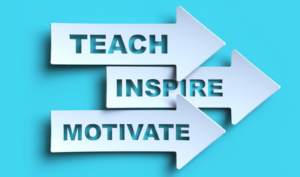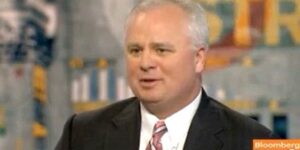
How Personality Types Influence Virtual Training Success
“I know what I like, and I like what I know.” It’s easy to scoff at this old saying. Yet it applies to most of

“I know what I like, and I like what I know.” It’s easy to scoff at this old saying. Yet it applies to most of

As the digital landscape continues to evolve, organizations recognize how vital it is to build teams with both competence and a strong dedication to security

As organizations enter a new era, we’re seeing a clear shift in management methods and practices. Traditional command-and-control styles are giving way to a more

When employees feel disconnected from their jobs — or their work doesn’t bring a sense of purpose to their lives — they’re more likely to

You’re a business leader. You believe in your company with all your heart. Your commitment to the organization’s mission drives you to aim high, work

Music is a great unifier. In our private lives, shared tunes always have a way of bringing people together to sing, dance, laugh and socialize.

Three years ago, the pandemic lockdown triggered a wave of relentless workplace change. Over time, we’ve all had to revamp our attitudes, expectations and behaviors

Leadership has its own battles with productivity, as longtime TalentCulture friend and leadership expert Gregg Lederman says. He recently dove into why some leaders struggle

A lot has been said about stress in the workplace over the years, and for good reason. Stress takes a serious toll on employees, both

Working from home is a necessity for many of us right now. It’s a critical way to help flatten the curve, for one. It can

On #WorkTrends this week, we discussed the ways everyone can reignite the fire of inspiration and be motivated again.

Join #WorkTrends this week to discuss the ways everyone can reignite the fire of inspiration and be motivated again.

Gamification is proving to be an effective tactic to help motivate employees and increase engagement. A dedicated workforce can be your greatest asset and —
During the holiday season, “good will to all” is an easy leadership reminder. Have you considered the Hallmark Channel for a few more? This week
Want to find out how your business is performing? Setting and analyzing performance indicators for your company is the best way to forecast and get
The multigenerational workforce; you’ve heard about it. There are about six generations that live in America today – three to five of which are in
Winning Your Employees Over To Stick With The Company Long Term Involves An Array Of Factors—But First Among Those Is Love. What are the real
“The only thing we have to fear is fear itself.” – Franklin D. Roosevelt We live in an age when we allow ourselves to be
“I believe that close association with one who refuses to compromise with circumstances he or she does not like is an asset that can never
Office break rooms are often riddled with “you can do it!” style posters. You know, the ones that have a picture of Sequoia trees in

Successful leaders understand the power of human nature. What do they know about behavior that others can learn?

How would you describe your ideal employer? Here’s one factor that many job seekers overlook — but it has potential to make all the difference.

How can employers win the hearts and minds of today’s workforce? The TalentCulture community takes a closer look — for better or worse.

Managing career decisions can be overwhelming. But all of us face an uncertain future. What can Richard Branson’s career teach us?

What can long-distance running teach us about entrepreneurship? Here are 6 ideas from a street-smart young leader